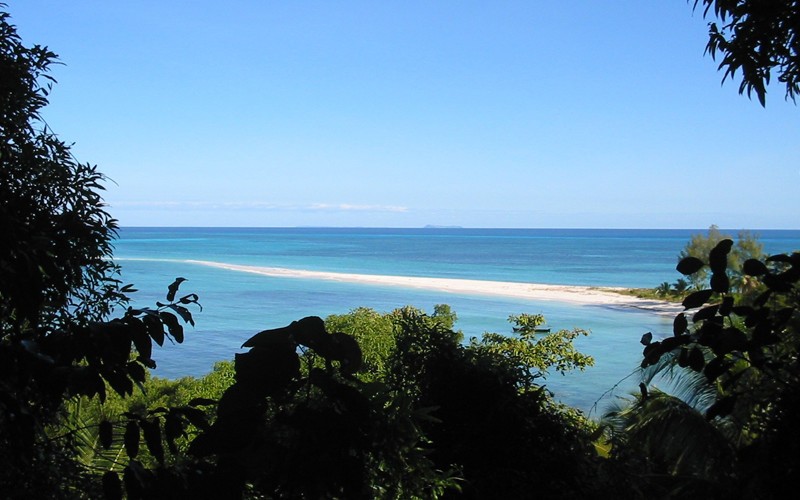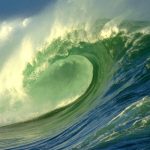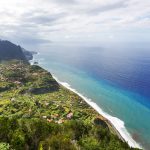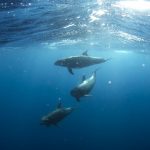The Indian Ocean is the third largest, after the Atlantic and the Pacific Oceans. It extends over approximately 9,978 kilometers from southern Africa to Western Australia and is almost six times the size of the United States. Its boundaries include Asia in the north, Africa in the west, Australia in the east, and the Antarctic or the Southern Ocean in the south.
This body of water covers about 19.5 percent of the total water on Earth, or in other words, one-fifth. It covers 13.8 percent of the Earth's surface. It has an area of 70.56 million square kilometers and includes:
- the Andaman Sea,
- The Arabian Sea,
- the Bay of Bengal,
- the Flores Sea,
- the Great Australian Bight,
- the Gulf of Aden,
- the Gulf of Oman,
- the Java Sea,
- the Mozambique channel,
- the Persian Gulf,
- the Red Sea,
- the Savu Sea,
- the Strait of Malacca, and
- The Timor Sea.
It connects with the Mediterranean Sea through the Suez Canal.
Its volume is 292,131,000 cubic kilometers. Its average depth is around 3,890 meters, and its deepest point is the Java Trench or Sunda Trench, measuring between 7,258 and 7,725 meters. However, sometimes it is mentioned that the Diamantina Trench is the deepest part of this ocean, slightly deeper, about 8,047 meters.
The highest level of salinity is in the Arabian Sea and along a belt of water.
Properties of the Indian Ocean.
The water salinity in the Indian Ocean is between 3.2 and 3.7 percent. The highest level of salinity is in the Arabian Sea and along a belt of water located between southern Africa and southwestern Australia. It is common to see icebergs at latitude 65° south throughout the year, but their limit is latitude 45° south.
Its surface temperature at latitude 20° south is about 22°C, while in the east can exceed 28°C. From latitude 40° south, water temperatures decrease. Incoming flows from the Atlantic Ocean, the Red Sea, and Antarctic currents control the circulation of water, but the ocean has two basic flow patterns: the northern hemisphere current, which moves to the right, and another stream south of the equator, which moves in the opposite direction.
The weather is variable. North of the equator, it is dominated by a monsoon climate, but in the southern hemisphere, winds are weaker, with occasional summer storms that hit the Mauritius Island. From October to April, there are high winds in the Northeast. The monsoon season causes cyclones that can batter the Bay of Bengal and the Arabian Sea.
This ocean is more recent than the others, so there are crags and ridges in its floor. The South Kerguelen Plateau, a small underwater continent of volcanic origin, is in the south. In the west and near Madagascar, there is an underwater plateau whose length is 2,000 kilometers.
Economic Importance of the Indian Ocean.
The Indian Ocean contains a significant amount of oil and natural gas and is also a source of fish, sand, and metal, relevant to different industries. It has four main waterways: Bab-el-Mandeb, the Strait of Hormuz, the Straits of Malacca, and the Suez Canal.
40 percent of the world’s offshore oil production has its origin in the Indian Ocean.
Marine life is relatively limited in the Indian Ocean due to lower concentrations of phytoplankton. However, the northern part of this ocean is home to a larger number of species, which are essential for human consumption. Fishing fleets from Russia, Japan, Taiwan and South Korea navigate this ocean catching shrimp and tuna.
Moreover, there is a continuous traffic carrying oil from Indonesia and the Persian Gulf, with an average of 17 million barrels of oil per day. In fact, 40 percent of the world’s offshore oil production has its origin in the Indian Ocean.
Conservation of the Indian Ocean.
In the late 90’s, a huge quantity of trash was found, suspended on the surface of the Indian Ocean. Thousands of plastic particles, chemical substances, and other garbage are concentrated there, covering about 10 million square kilometers. Meanwhile, the Arabian and Red Seas and the Persian Gulf are contaminated with hydrocarbons from oil and gas.
The ocean is home to some endangered species: the dugong, whales, seals, and turtles.
Quick facts:
• It is the warmest ocean basin on Earth.
• Annually, more than 7,000 humpback whales travel to the waters of Madagascar to breed and give birth.
• The world's earliest civilizations developed around the Indian Ocean.
• In Sanskrit literature, it is known as "Ratnakara" which means "gemstone mine.”





